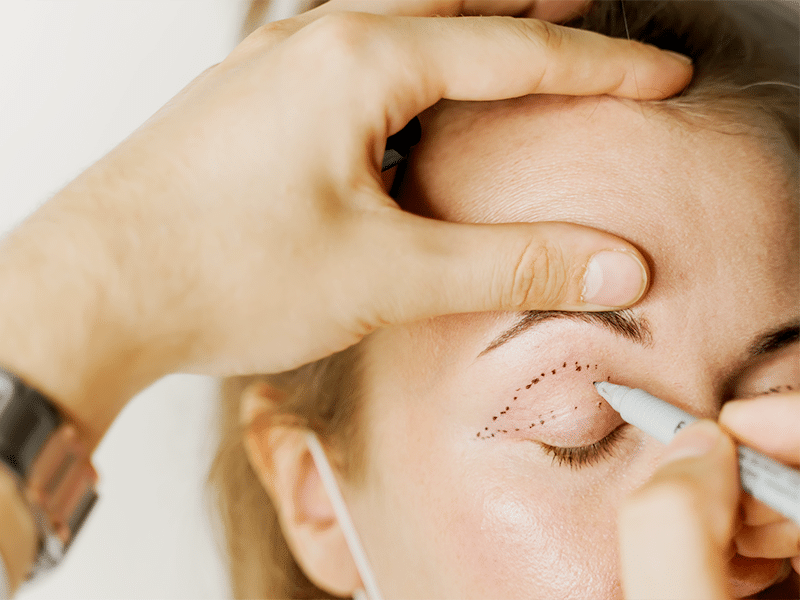Eyelid Surgery
Eyelid Surgery
Eyelid surgery, or blepharoplasty, is a surgical procedure that improves the appearance of the eyelids. Eyelid surgery can be performed on the lower, upper, or both eyelids to remove fat and tighten the skin around the eyes.
The delicate skin around the eyes is one of the first areas to start showing signs of aging. For example, the lower eyelid could begin to bulge, with the skin taking on a crepe-like appearance as we age. Additionally, upper eyelids can begin to sag, and crow’s feet can appear. Whether you are experiencing functional problems or want to improve your appearance, Dr. Epperson can utilize the eyelid surgery procedure to rejuvenate the area surrounding your eyes.

Benefits of an Eyelid Surgery
Who’s eligible?
Eyelid surgery is an excellent option for men and women looking to reinvigorate the area around their eyes. The procedure is also helpful to patients experiencing loss of peripheral vision because of overhanging upper eyelid skin. The ideal candidate for eyelid surgery is ready to optimize the condition of their lower and upper lids and wants to look well-rested and rejuvenated!
Eyelid Surgery FAQ
Eyelid surgery can not completely eliminate crow’s feet, but it can significantly reduce their appearance by tightening and smoothing the skin around the eyes. Patients can expect to see the results immediately after surgery, and crow’s feet should remain minimized for at least 5-7 years.
Incisions made during eyelid surgery are usually concealed along the natural folds, lines, creases, and contours in the skin. In lower eyelid surgeries, the incisions are generally made on the inside of the lower eyelid or along the lower lash line. In upper eyelid surgery, the incisions are typically made along the existing crease of the upper lid.
The recovery process after eyelid surgery is relatively simple and includes some minor bruising, swelling, and pain for a few days after the surgery. Patients could also experience some irritation or dryness of the eyes. However, patients can easily manage the side effects with medication, cold compresses, and dark-tinted glasses. Patients should expect to make a full recovery in 14 days after surgery.
